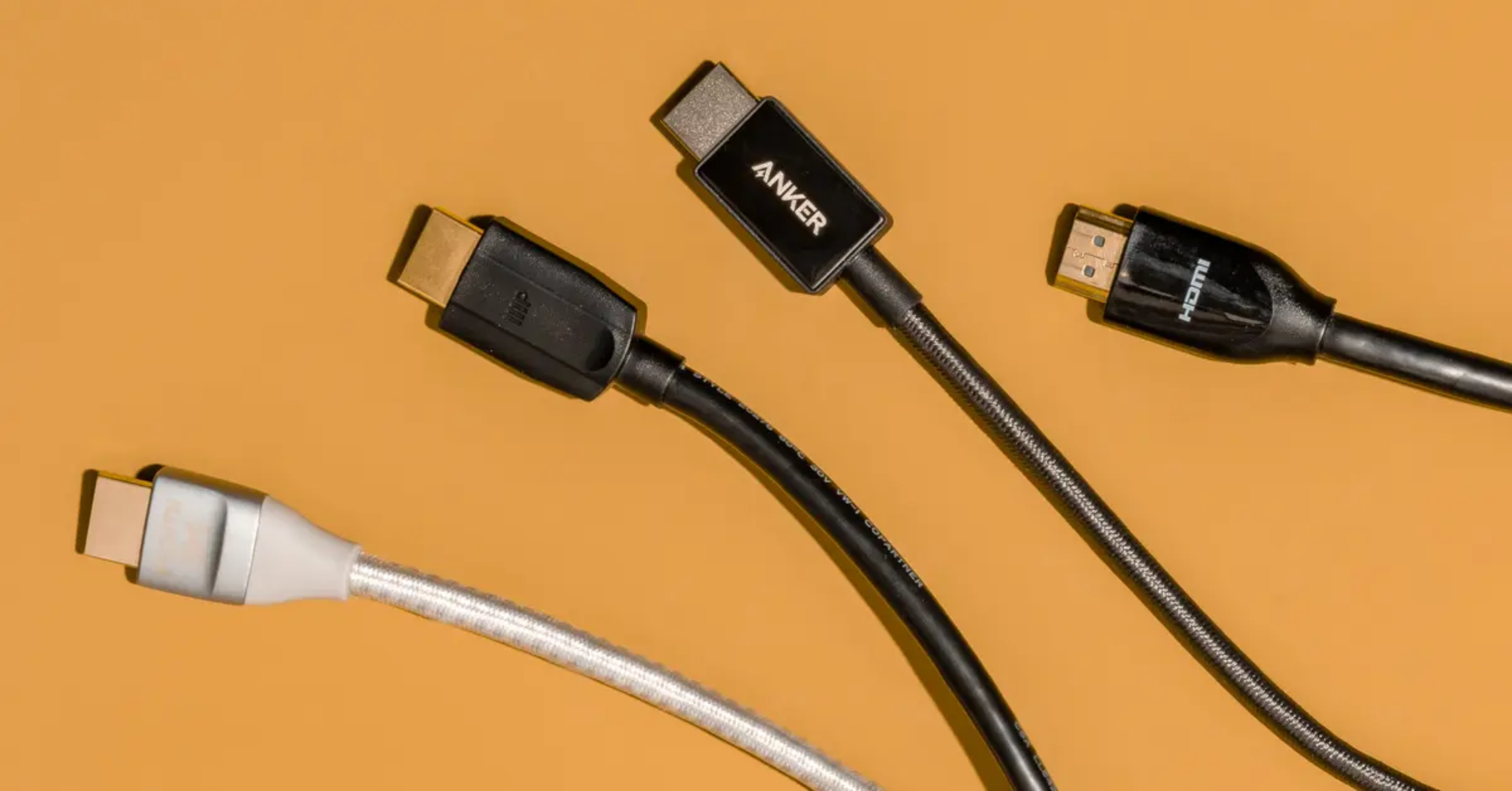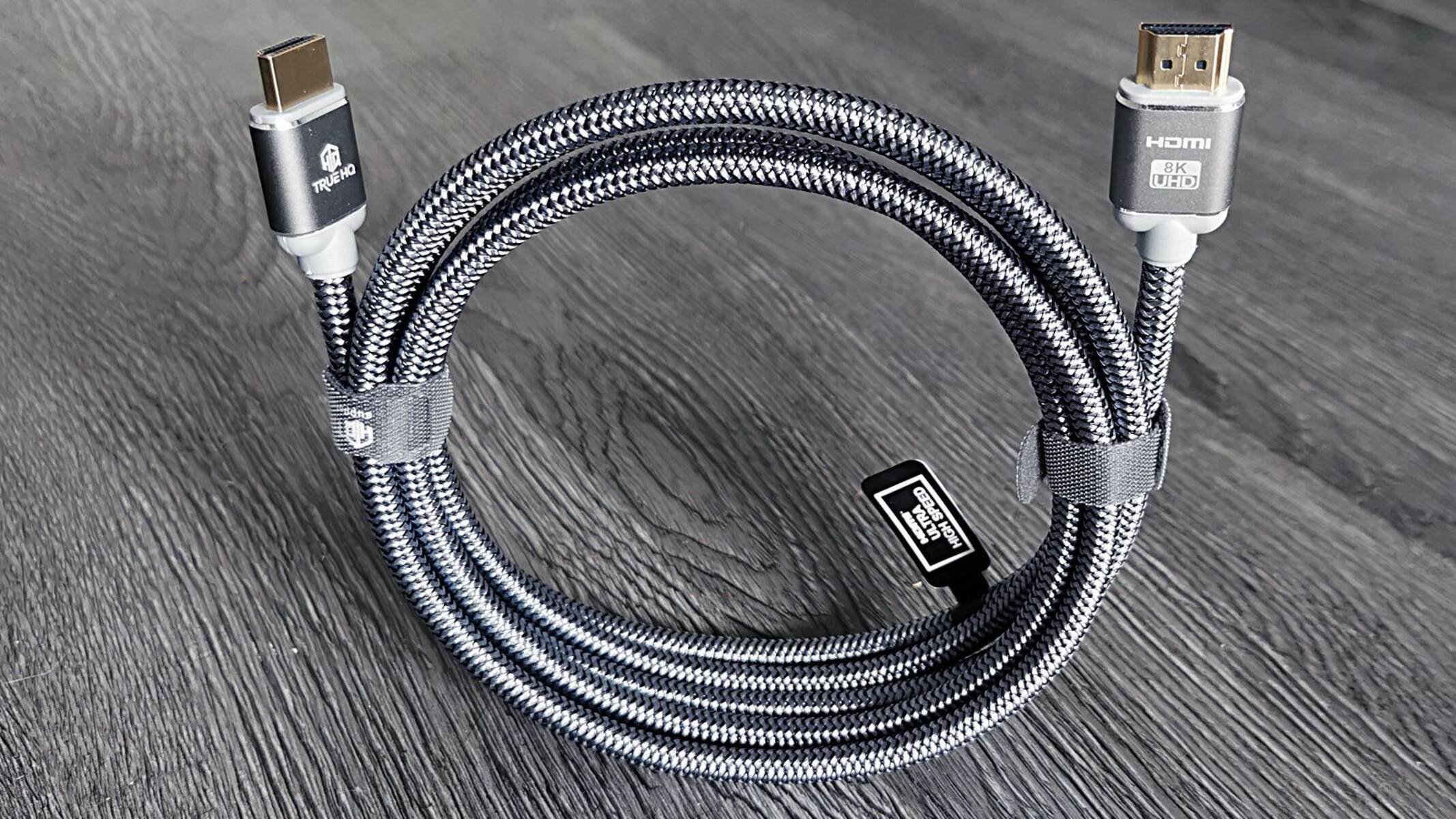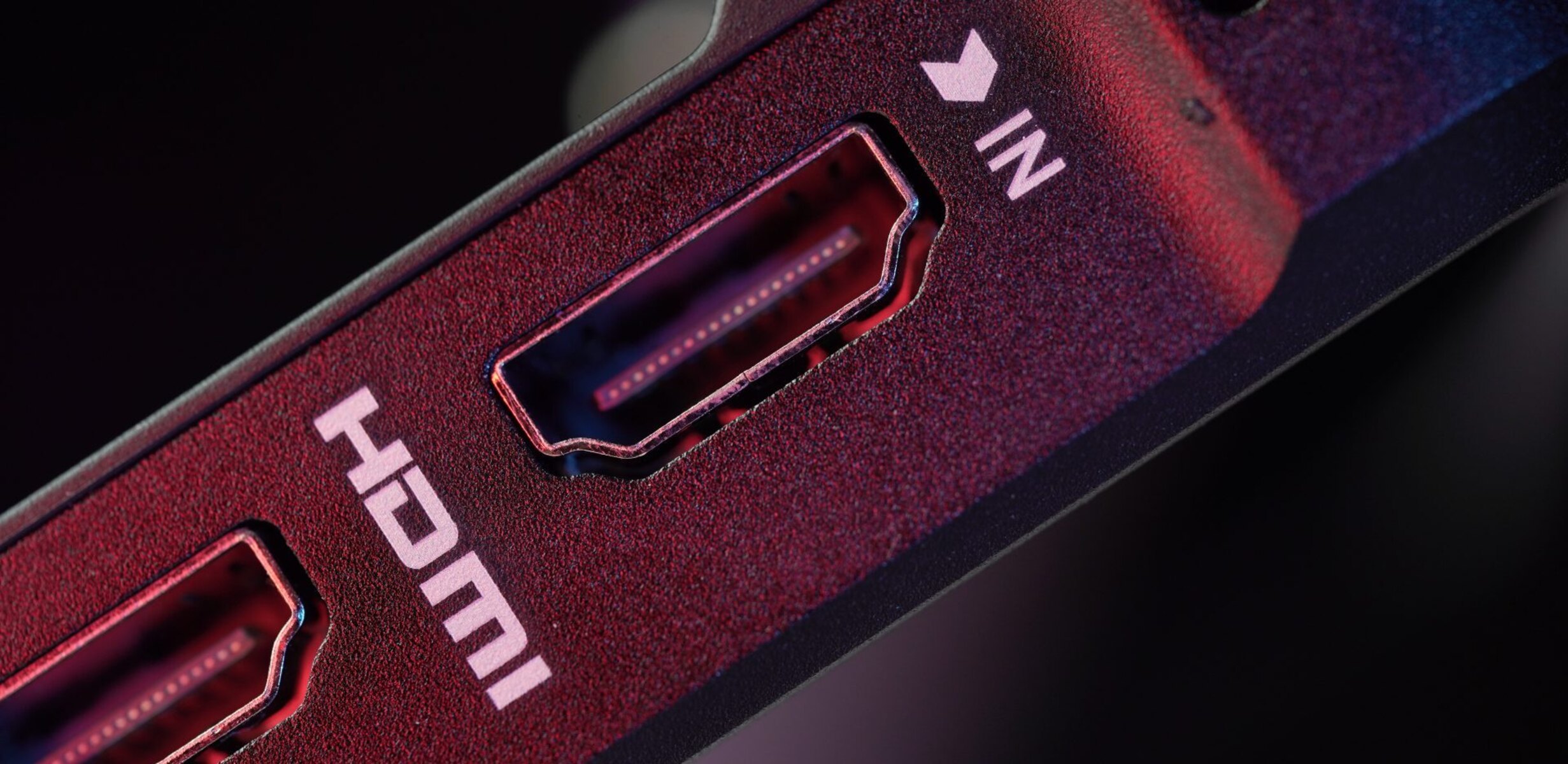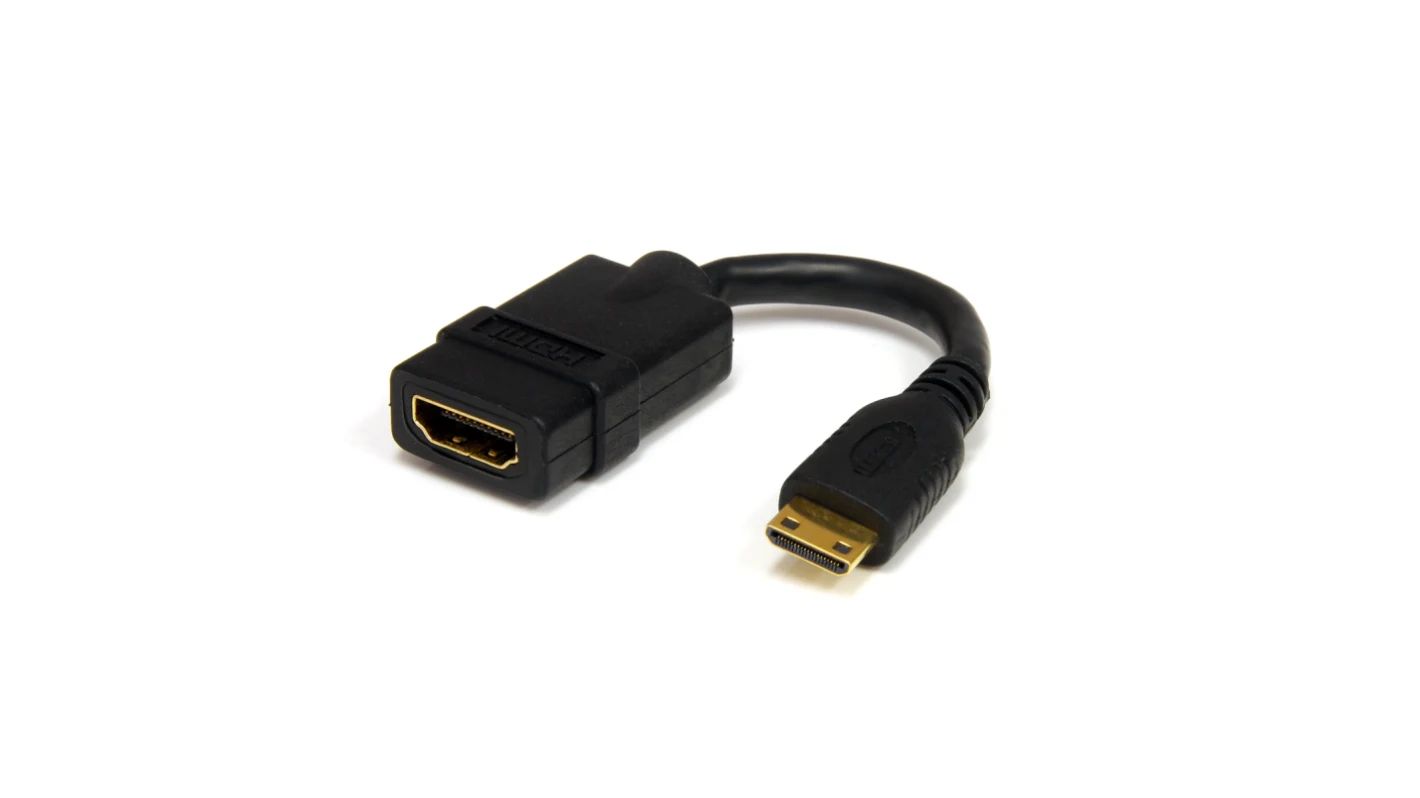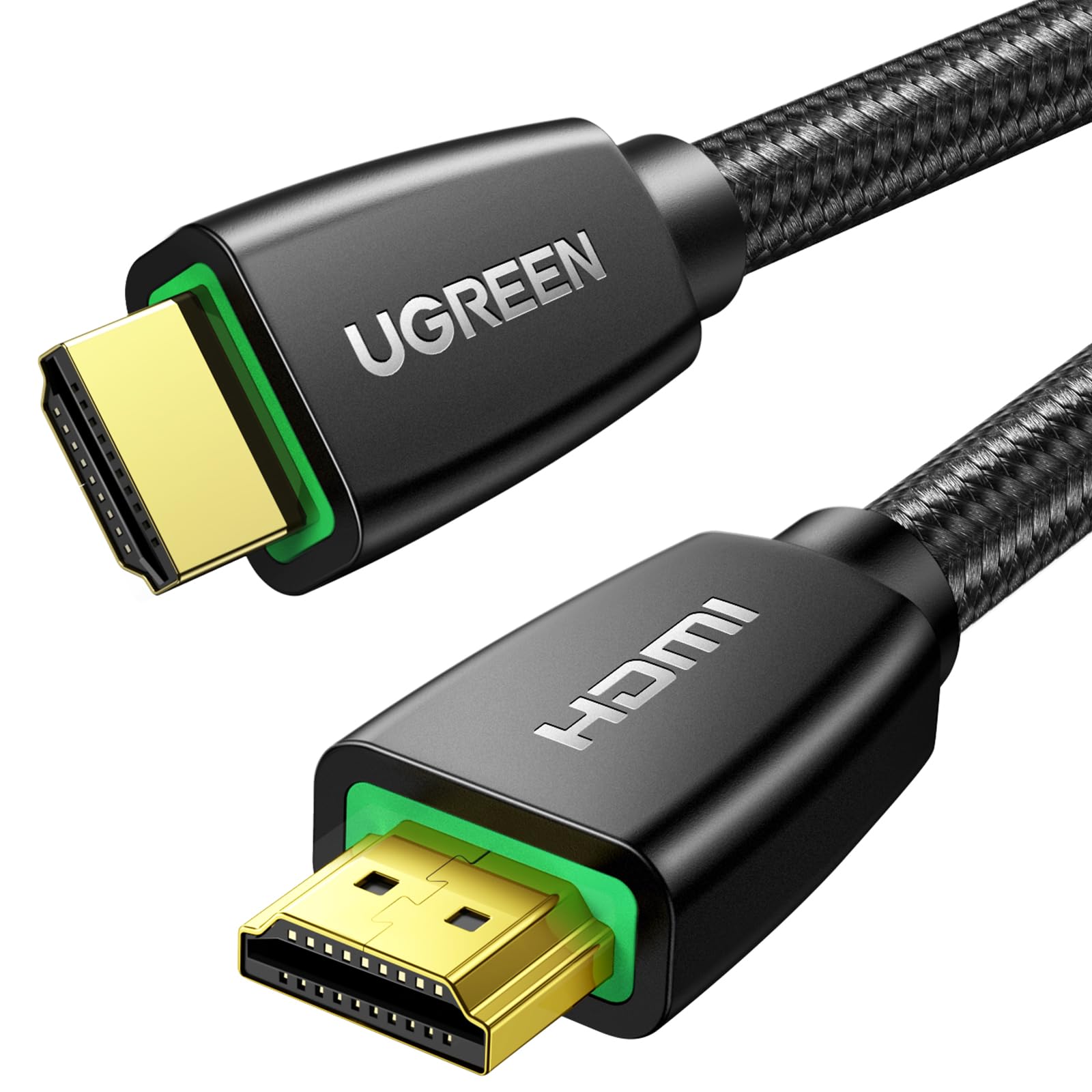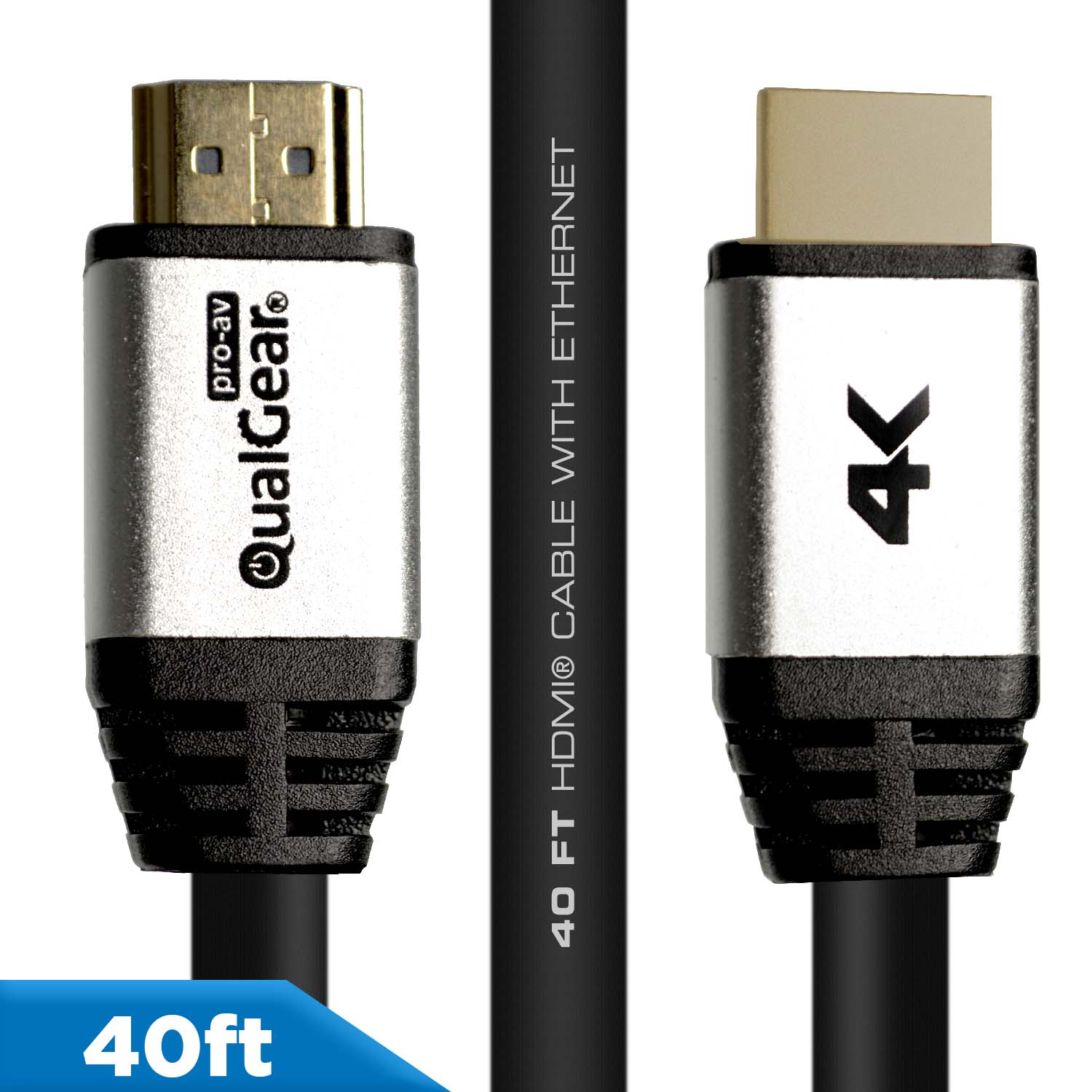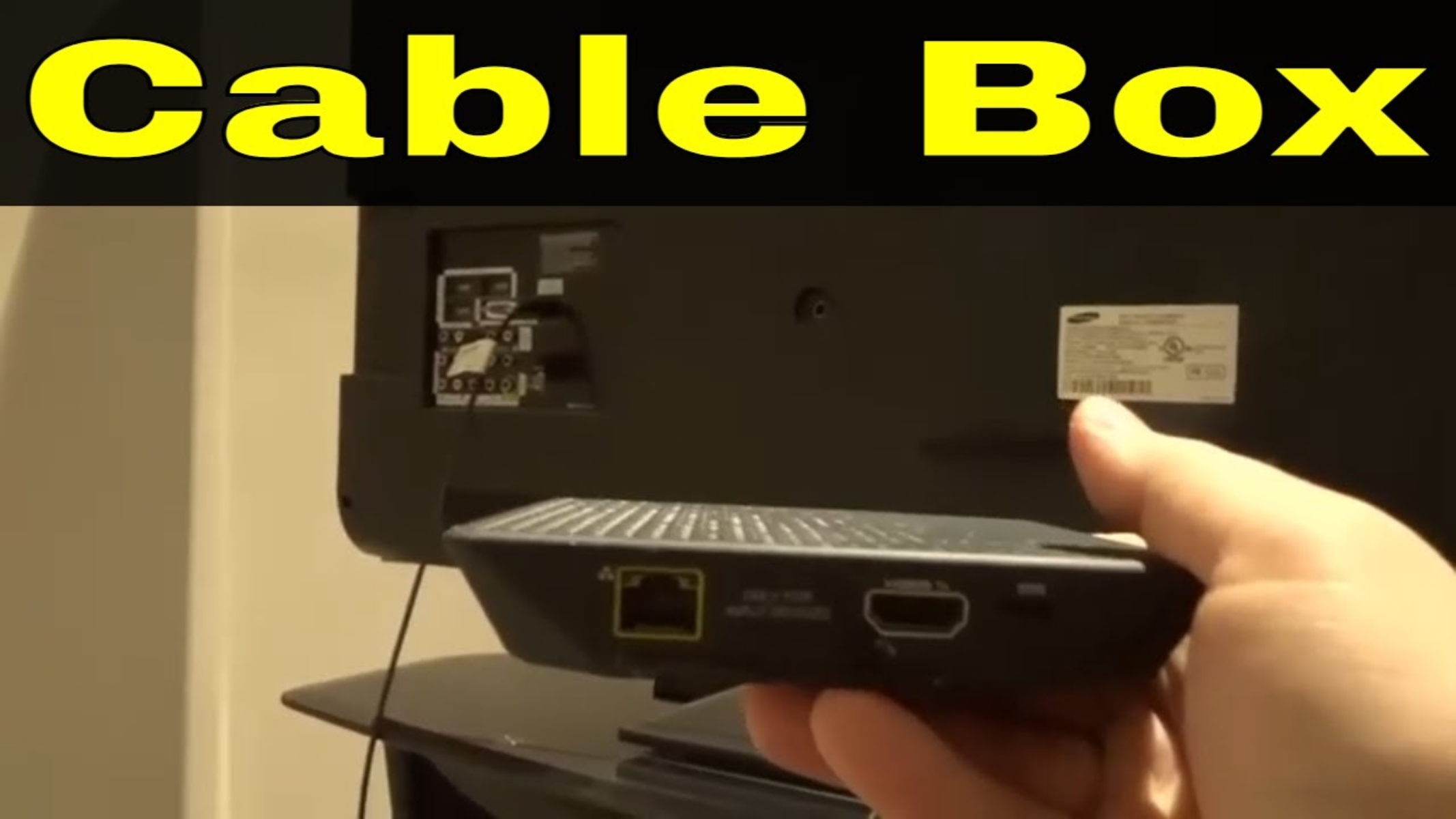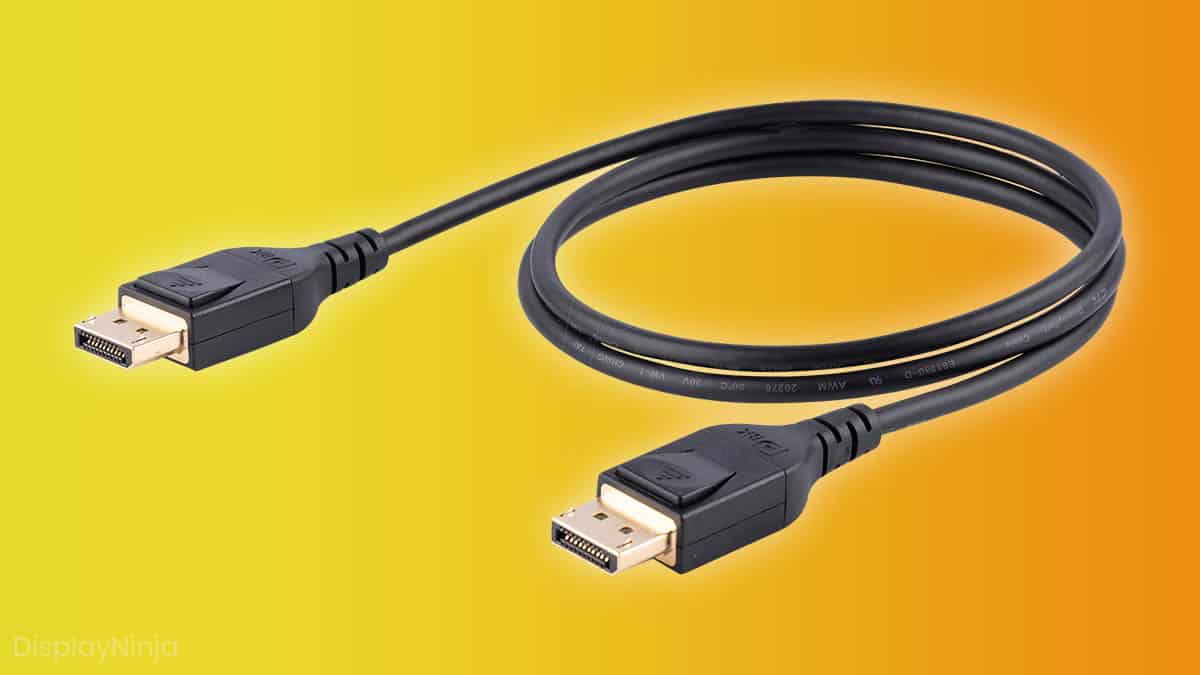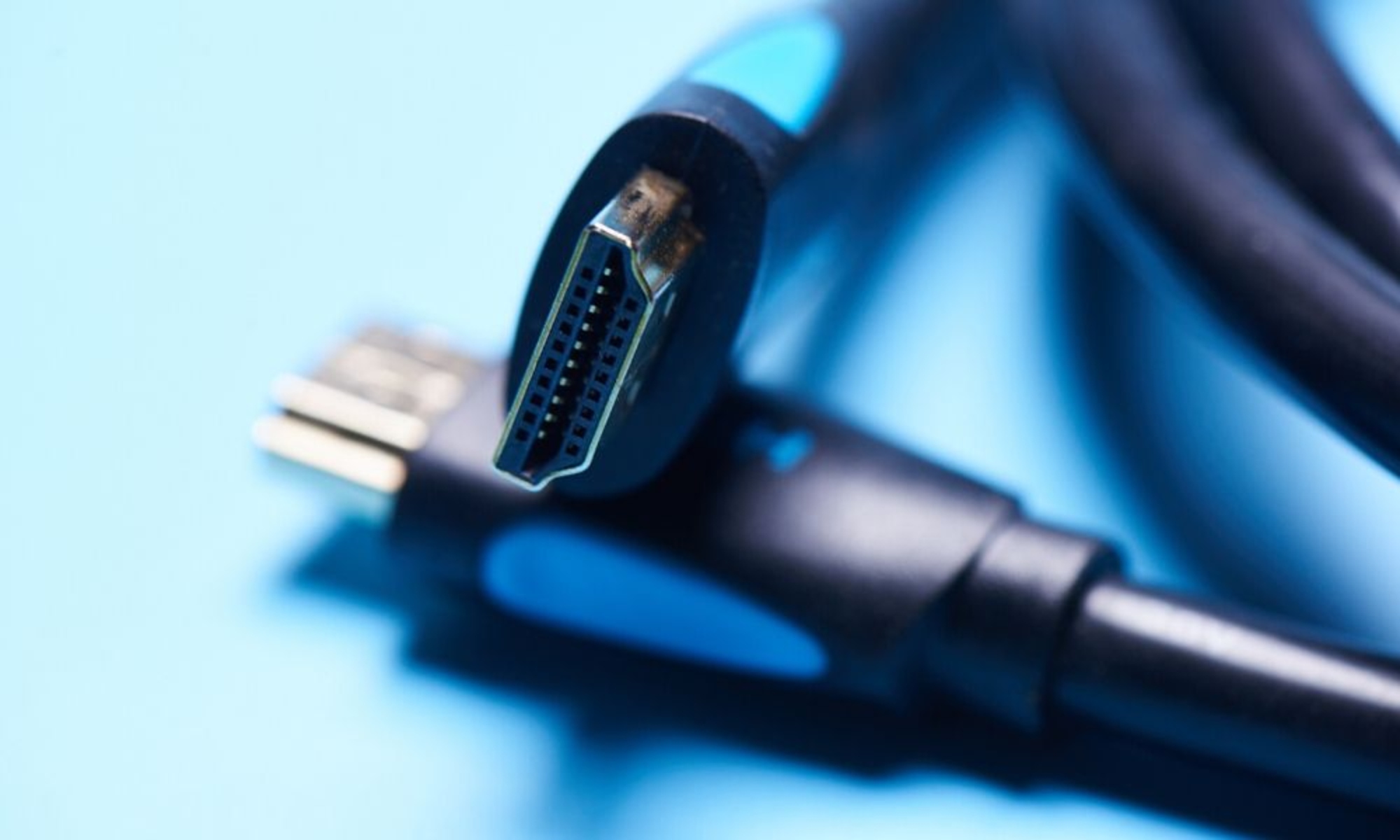Introduction
Welcome to the world of HDMI cables! If you’ve recently purchased a new TV, gaming console, Blu-ray player, or any other device that requires a high-definition connection, you may find yourself wondering, “What HDMI cables do I need?”
HDMI, which stands for High-Definition Multimedia Interface, is the industry-standard for transmitting both high-definition video and audio signals. With the ability to handle resolutions of up to 4K and support for various audio formats, HDMI cables have become an essential part of any home entertainment setup.
In this article, we will explore the different types of HDMI cables available on the market, their specifications, and which ones you should consider for your specific needs. From standard HDMI cables to premium high-speed and ultra high-speed options, we’ll help you make an informed decision when it comes to choosing the right HDMI cables.
Understanding the differences between HDMI cable types and their capabilities is crucial. Not only will it ensure that you get the best possible performance from your connected devices, but it will also prevent you from overspending on cables with unnecessary features.
Whether you’re setting up a home theater system or connecting multiple devices to your TV, knowing which HDMI cables to purchase can make a significant difference in your overall viewing experience. So, let’s dive into the world of HDMI cables and discover the options available to you.
Please note that this article aims to provide an informative guide to understanding HDMI cables. It is important to consult the user manuals of your specific devices and manufacturers’ recommendations when selecting the appropriate cables. With that said, let’s start our exploration of HDMI cables and find the perfect ones for your needs!
HDMI Basics
Before we delve into the different types of HDMI cables, it’s essential to understand the basics of how HDMI works. HDMI cables transmit both video and audio signals digitally, which means there is no loss of quality during transmission.
HDMI cables consist of several channels that carry different types of information. These channels include the video channel, audio channel, and control channel. The video channel is responsible for transmitting high-resolution video signals, while the audio channel carries audio information. The control channel allows for communication between devices, enabling features like remote control functionality and automatic device recognition.
HDMI cables come in different versions, with each version supporting various features and capabilities. The most common versions are HDMI 1.4, HDMI 2.0, and HDMI 2.1. Each newer version offers improved bandwidth, allowing for higher resolutions, refresh rates, and more advanced features like HDR (High Dynamic Range) and Dolby Atmos audio.
When it comes to physical connectors, HDMI cables have a distinct shape with a series of pins inside. These pins align with the corresponding receptacles on HDMI-enabled devices, ensuring secure and reliable connections. It’s important to make sure the pins are not bent or damaged, as this can affect the signal quality.
One of the significant advantages of HDMI cables is their ability to carry both video and audio signals, eliminating the need for separate audio cables. This simplifies connections and reduces cable clutter in your entertainment setup.
Another feature of HDMI cables is CEC (Consumer Electronics Control). CEC allows compatible devices connected via HDMI to be controlled with a single remote. For example, using your TV remote to adjust the volume on your connected soundbar. Not all devices support CEC, so it’s essential to check if your devices have this feature if you want to take advantage of it.
To get the best performance from your HDMI cables, it’s crucial to ensure they are of high quality and meet the necessary specifications. Cheap or poorly made cables may not deliver the desired video or audio quality and can even cause connectivity issues.
Now that we’ve covered the basics of HDMI, let’s move on to explore the different types of HDMI cables available on the market and their specific features and benefits.
Types of HDMI Cables
When it comes to choosing HDMI cables, you’ll find several types available on the market. These types vary in terms of their capabilities and features, ensuring compatibility with different devices and meeting specific requirements. Let’s take a closer look at the different types of HDMI cables:
1. Standard HDMI Cables: Standard HDMI cables, also known as Category 1 HDMI cables, are capable of delivering high-definition video and standard audio signals. They support resolutions up to 720p or 1080i and are suitable for connecting devices like DVD players or older gaming consoles that do not require ultra-high resolutions or advanced features.
2. High-Speed HDMI Cables: High-Speed HDMI cables, also referred to as Category 2 HDMI cables, offer increased bandwidth and improved performance compared to standard cables. They support higher resolutions, including Full HD 1080p and 4K, and can handle advanced features such as 3D video, deep color, and xvYCC color space. High-Speed HDMI cables are widely used for connecting modern devices like Blu-ray players, 4K TVs, and gaming consoles.
3. Premium High-Speed HDMI Cables: Premium High-Speed HDMI cables are designed to meet the stringent specifications of HDMI 2.0 and HDMI 2.1. These cables can handle higher resolutions up to 8K, support variable refresh rates (VRR), and offer enhanced audio features like eARC (enhanced Audio Return Channel). Premium High-Speed HDMI cables are ideal for high-end home theater setups and advanced gaming systems.
4. Ultra High-Speed HDMI Cables: As the name suggests, Ultra High-Speed HDMI cables provide the highest level of performance and support the latest HDMI specifications, including HDMI 2.1. These cables can handle resolutions up to 10K, offer increased bandwidth for smooth gaming experiences, support dynamic HDR, and feature advanced audio technologies like DTS:X and Dolby Atmos. Ultra High-Speed HDMI cables are suitable for users seeking the most cutting-edge features and future-proof compatibility.
When choosing the right HDMI cable, it’s important to consider the capabilities of your devices and the specific features you require. While older devices may work fine with standard HDMI cables, newer devices and advanced features will benefit from High-Speed, Premium High-Speed, or Ultra High-Speed HDMI cables.
Keep in mind that while higher-quality HDMI cables may come at a slightly higher price, they offer better performance and reliability, ensuring optimal viewing and audio experiences.
Now that you’re familiar with the different types of HDMI cables, let’s move on to discuss the importance of cable length and version compatibility in the next sections.
Standard HDMI Cables
Standard HDMI cables, also known as Category 1 HDMI cables, are the most basic type of HDMI cables available. They are designed to transmit high-definition video signals and standard audio signals.
These cables are capable of supporting resolutions up to 720p or 1080i, making them suitable for connecting devices like DVD players, older gaming consoles, and older TVs that do not require ultra-high resolutions. Standard HDMI cables have a bandwidth of 4.95 Gbps (gigabits per second), which is sufficient for transmitting HD video and standard audio formats.
While standard HDMI cables do not offer the advanced features and higher resolutions supported by newer cable types, they are still widely used for basic home entertainment setups. They provide a reliable and cost-effective option for connecting devices that do not require the latest specifications.
When using standard HDMI cables, it’s important to ensure they are connected securely and that the connectors are not damaged or bent. Any issues with the cable connections can result in reduced video or audio quality.
Standard HDMI cables are not backward compatible with HDMI 2.0 or later versions, which means they may not support the highest resolutions and advanced features available on newer devices. However, they can still be used with older devices that have HDMI ports.
If you have older devices or TVs that do not require 4K or HDR capabilities, a standard HDMI cable should suffice. They are widely available and come in various lengths to suit your specific needs. It’s essential to choose a length that allows for flexible positioning of your devices without excessive cable tangles or strain.
While standard HDMI cables can serve their purpose for basic setups, it’s important to keep in mind that if you plan to upgrade your devices or want to take advantage of advanced features like 4K resolution or HDR, you may need to consider upgrading to a higher-speed HDMI cable.
In the next section, we will discuss high-speed HDMI cables, which offer improved performance and are suitable for connecting devices that require higher resolutions and more advanced features.
High-Speed HDMI Cables
High-Speed HDMI cables, also known as Category 2 HDMI cables, are the next step up from standard HDMI cables and offer improved performance and capabilities. These cables are designed to support higher resolutions, advanced features, and increased bandwidth.
High-Speed HDMI cables have a bandwidth of 10.2 Gbps (gigabits per second), which allows them to handle video resolutions up to Full HD 1080p and even 4K. They can also support advanced features such as 3D video, deep color, and xvYCC color space.
These cables are commonly used for connecting modern devices like Blu-ray players, 4K TVs, gaming consoles, and media streaming devices. They provide a reliable connection and ensure that you can enjoy high-quality video and audio without any loss of signal or degradation in performance.
If you have a 4K TV or plan to upgrade to one, it’s highly recommended to use high-speed HDMI cables to take full advantage of the resolution and features supported by your TV. High-speed cables are also necessary for devices that require high refresh rates or extended color spaces.
When shopping for high-speed HDMI cables, it’s important to choose ones that are labeled as “High-Speed” or “Category 2.” These cables are manufactured to meet the necessary specifications for supporting the higher resolutions and features required by modern devices.
Additionally, it’s important to ensure that the connectors on the high-speed HDMI cables are of good quality and firmly connected to the devices. Loose or damaged connectors can result in signal loss or intermittent connection issues.
High-speed HDMI cables are available in various lengths to suit your needs. It’s important to choose a length that allows for flexibility in positioning your devices while avoiding excessive cable lengths that can lead to signal degradation.
While high-speed HDMI cables offer better performance and capabilities compared to standard cables, they are not backward compatible with older devices that may only support standard HDMI. It’s important to check the compatibility of your devices and choose the appropriate cable type accordingly.
In the next section, we will discuss premium high-speed HDMI cables, which provide enhanced features and compatibility with the latest HDMI specifications.
Premium High-Speed HDMI Cables
Premium High-Speed HDMI cables are advanced cables designed to meet the stringent specifications of HDMI 2.0 and HDMI 2.1. These cables offer enhanced features, increased bandwidth, and improved performance compared to standard and high-speed HDMI cables.
One of the key features of premium high-speed HDMI cables is their ability to support higher resolutions, including 8K and even future 10K resolutions. These cables provide the necessary bandwidth to transmit ultra-high definition video with incredible detail and clarity.
In addition to supporting higher resolutions, premium high-speed HDMI cables also offer features like variable refresh rates (VRR), which provide smoother gameplay for gaming enthusiasts. They also support dynamic HDR (High Dynamic Range), allowing for more vibrant colors and greater contrast in video content.
Another significant feature of premium high-speed HDMI cables is their support for enhanced Audio Return Channel (eARC). eARC enables the transmission of high-quality audio formats like Dolby Atmos and DTS:X, providing an immersive audio experience for home theater setups.
Moreover, premium high-speed HDMI cables support other advanced features like Quick Frame Transport (QFT), Auto Low Latency Mode (ALLM), and enhanced gaming features, delivering optimal performance for gamers who demand high-speed and responsive gameplay.
When purchasing premium high-speed HDMI cables, it’s important to ensure they are certified by HDMI Authorized Testing Centers (ATCs) to guarantee compatibility and performance. Look for the “Premium Certified” label on the packaging or product description to ensure that you are getting a cable that meets the necessary standards.
While premium high-speed HDMI cables offer enhanced features compared to standard and high-speed cables, it’s important to consider whether your devices and setup truly require these advanced capabilities. If you have a compatible 8K TV, gaming console, or other high-end devices, investing in premium high-speed HDMI cables can ensure you get the best performance and future-proof your setup.
Lastly, it’s worth mentioning that cable length can affect the overall performance of premium high-speed HDMI cables. Choosing the right length is crucial to prevent signal loss or degradation. Consider the distance between your devices and ensure you select a cable length that allows for proper positioning without excessive cable lengths.
In the next section, we will explore ultra high-speed HDMI cables, which offer the highest level of performance and support the latest HDMI specifications.
Ultra High-Speed HDMI Cables
Ultra High-Speed HDMI cables represent the pinnacle of HDMI cable technology, offering the highest level of performance and compatibility with the latest HDMI specifications, including HDMI 2.1. These cables are designed to meet the demands of advanced home theater systems and cutting-edge display technologies.
One of the key features of ultra high-speed HDMI cables is their ability to support resolutions of up to 10K, allowing for incredibly detailed and immersive visuals. They provide the necessary bandwidth to transmit and display content with exceptional clarity and precision.
In addition to high resolutions, ultra high-speed HDMI cables support dynamic HDR (High Dynamic Range), providing a wider range of colors and contrast for a more lifelike viewing experience. They also support advanced features like Variable Refresh Rate (VRR), Quick Frame Transport (QFT), and Auto Low Latency Mode (ALLM), ensuring smooth and responsive gameplay for gamers.
Moreover, ultra high-speed HDMI cables integrate enhanced Audio Return Channel (eARC), enabling the transmission of high-quality audio formats such as Dolby Atmos and DTS:X. This ensures that you can enjoy immersive, three-dimensional audio that matches the stunning visuals delivered by your ultra high-speed HDMI compatible devices.
It’s important to note that ultra high-speed HDMI cables are backward compatible with previous HDMI versions, including HDMI 2.0 and HDMI 1.4. This means that you can use ultra high-speed cables with older devices while still benefiting from the advanced features and capabilities of your latest devices.
When selecting ultra high-speed HDMI cables, it is crucial to ensure they are certified by HDMI Authorized Testing Centers (ATCs). Look for the “Ultra High-Speed HDMI Certified” label on the packaging or product description to ensure the highest level of performance and compatibility.
Since ultra high-speed HDMI cables are designed to meet the most demanding requirements, they are typically more expensive than other types of HDMI cables. However, if you have a cutting-edge home theater setup or plan to invest in advanced display technologies, using ultra high-speed HDMI cables will ensure you get the best performance and future-proof your setup.
Lastly, consider the length of the cable when purchasing ultra high-speed HDMI cables. Longer cable lengths can result in signal degradation, so it’s important to choose the appropriate length based on the distance between your devices.
Now that we have explored the various types of HDMI cables, let’s move on to discuss the importance of cable length and HDMI version compatibility in the next sections.
Length of HDMI Cables
The length of HDMI cables is an important consideration when setting up your home entertainment system. Choosing the right cable length ensures optimal performance and prevents signal degradation.
HDMI cables come in various lengths, ranging from a few feet to 50 feet or more. When selecting the length, it’s important to consider the distance between your source devices and your display or receiver.
In general, it is recommended to choose the shortest cable length that allows for proper connection and positioning of your devices. This helps minimize signal loss and interference that can occur over longer cable runs.
If your devices are located in close proximity, like a Blu-ray player sitting right next to your TV, a shorter HDMI cable is sufficient. However, in cases where the devices are far apart, such as when the source device is in a different room or on the opposite side of a large living space, longer cables are necessary.
It’s important to remember that the longer the HDMI cable, the more likely it is for the signal to degrade. Factors such as cable quality, signal strength, and interference from other electronic devices can affect the performance of longer cables.
For cables shorter than 15 feet, standard HDMI cables usually suffice. However, when considering longer cable lengths, it’s advisable to opt for high-speed HDMI cables. High-speed cables are built to handle the increased data transfer required over longer distances, ensuring a stable connection and optimal signal quality.
If you require even longer cable lengths, it’s recommended to consult with a professional or refer to HDMI extension solutions to maintain signal integrity. HDMI extenders or signal boosters can help overcome the limitations of longer cable runs by amplifying the signal to ensure reliable transmission.
Another option to consider is using HDMI over Ethernet (Cat 5/6) converters. These converters allow you to transmit HDMI signals over longer distances using Ethernet cables. This can be a cost-effective solution for extending HDMI connections to different rooms or locations within your home.
Regardless of the cable length you choose, it’s important to handle HDMI cables with care. Avoid bending or twisting the cables excessively, as this can damage the internal wires and affect the signal quality.
In the next section, we will discuss the importance of HDMI cable version compatibility and how it can impact your home entertainment setup.
HDMI Cable Version Compatibility
HDMI cables come in different versions, and it’s important to ensure compatibility between the cables and your devices. The HDMI version of the cable determines the supported features, resolutions, and bandwidth.
The most common HDMI versions are HDMI 1.4, HDMI 2.0, and HDMI 2.1. Each version introduces new features and capabilities, providing improved performance and support for higher resolutions.
When choosing an HDMI cable, it’s recommended to use a cable that matches or exceeds the HDMI version of your devices. Using a lower version cable may limit the features and resolutions that your devices can support.
For example, if you have a device that supports HDMI 2.0, it’s best to use a cable that is also rated for HDMI 2.0 or higher. This ensures that you can take advantage of the full capabilities and features of your device, such as 4K resolution, HDR, and high refresh rates.
However, it’s important to note that HDMI cables are generally backward compatible. This means that a higher version cable can be used with devices that support lower versions. For example, an HDMI 2.1 cable can be used with a device that supports HDMI 2.0 or HDMI 1.4. The cable will still work, but the device’s features will be limited to the capabilities of the lower version.
It’s also worth mentioning that the HDMI port on your device plays a role in determining the supported version. If your device has an HDMI 1.4 port, even if you use an HDMI 2.0 cable, the device will only support features and resolutions up to HDMI 1.4.
To ensure compatibility, it’s recommended to consult the user manual or specifications of your devices to determine the HDMI version they support. This information will help you choose the right cable that meets the requirements of your devices.
Furthermore, keep in mind that cable length can also affect the performance and compatibility of HDMI cables. Longer cable runs may introduce signal degradation, requiring higher-quality cables to ensure optimal performance.
In summary, HDMI cable version compatibility is crucial for achieving the best performance and utilizing the features of your devices. Using a cable that matches or exceeds the HDMI version of your devices ensures compatibility and allows you to enjoy the full capabilities of your home entertainment setup.
Next, we will explore important factors to consider when buying the right HDMI cables for your specific needs.
Buying the Right HDMI Cable
When it comes to buying the right HDMI cable, there are a few key factors to consider. By taking these factors into account, you can ensure that you get a cable that meets the requirements of your devices and provides the best performance for your home entertainment setup.
1. Compatibility: Firstly, it’s essential to ensure that the HDMI cable you choose is compatible with your devices. Check the HDMI version supported by your devices and choose a cable that matches or exceeds that version. This ensures that you can fully utilize the features and resolutions supported by your devices.
2. Cable Type: Consider the type of HDMI cable you need based on the requirements of your devices. Standard HDMI cables are suitable for basic setups, while high-speed HDMI cables are ideal for devices that require higher resolutions and advanced features. Premium high-speed and ultra-high-speed HDMI cables are designed for more advanced setups or users who demand the latest specifications.
3. Cable Length: Determine the appropriate cable length based on the distance between your devices. Choose a length that allows for flexible positioning without excessive cable tangles or strain. Longer lengths may require higher-quality cables or the use of extenders to maintain signal integrity.
4. Build Quality: Pay attention to the build quality of the HDMI cable. Look for cables made from high-quality materials and sturdy connectors. It’s important to ensure that the connectors are securely attached and that the cable itself is durable to handle frequent use and potential bending.
5. Certification: Look for HDMI cables that are certified by HDMI Authorized Testing Centers (ATCs). Certification ensures that the cable meets the necessary standards and offers reliable performance and compatibility.
6. Reviews and Recommendations: Reading customer reviews and seeking recommendations from trusted sources can give you insights into the performance and quality of different HDMI cables. Consider feedback from other users who have similar devices and requirements.
7. Budget: While it’s tempting to opt for the cheapest HDMI cable available, it’s important to balance cost with quality and features. Investing in a higher-quality cable may ensure better performance and longevity, especially if you have advanced devices or plan to upgrade in the future.
By considering these factors, you can make an informed decision when buying the right HDMI cable for your specific needs. Remember to consult the user manuals of your devices and the recommendations of manufacturers to ensure compatibility and optimal performance.
Now that you have a better understanding of HDMI cables and what to consider when purchasing them, you can confidently choose the right cable that will enhance your home entertainment experience.







